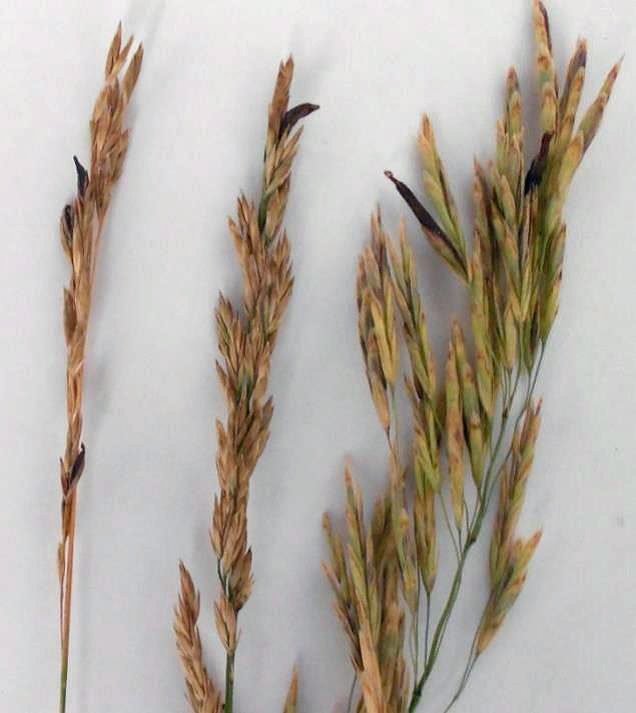
By Richard Randle, Beef Extension Veterinarian, University of Nebraska and Dee Griffin, Feedlot Production Management Veterinarian, Great Plains Veterinary Educational Center
There have been recent reports across the mid-west of cattle suffering from ergot poisoning. Several reports have been in Nebraska as well. Ergot is a fungus that grows on the seed head of cereal grains and grasses. Historically rye was commonly affected by the ergot fungus but wheat, rye, barley, oats, brome, fescue, blue, Timothy, Western and Intermediate Wheatgrass, and other grasses can also be infected. Environmental conditions associated with a cool wet spring followed by hot early summer temperatures are ideal for the ergot fungus to grow. Delayed harvesting of grass hay because of rain also means that late cut hay may also be at risk of ergotism. All animals are susceptible to ergot but cattle are often most affected.
The fungus produces toxic compounds called ergot alkaloids which are vaso-active causing severe vasoconstriction of small arteries. The extremities of cattle are most often affected causing loss of the tips of ears and tail. Depending on the level of ingestion, feet and legs can be affected as well causing signs of lameness with potential swelling in the fetlocks and hock joints observed, and in severe cases, loss of hooves. Changes in blood flow can also affect thermoregulation and result in heat intolerance. Cattle will commonly develop a rough hair coat, lose weight and have extended periods of time standing in water or shade if available.
Pastures and hay should be examined for the presence of the fungus. If present, the fungus can be identified as dark brown, purple or black bodies within the seed head. There is no practical way to eliminate the ergot-producing fungi from pastures. The incidence and severity of outbreaks vary with climatic conditions.
Producers that rely on fescue grass may be at additional risk since the toxins produced by endophyte infected fescue are very similar to ergot toxins.
Removing the animal from the source of the ergot toxins and providing supportive care is the only treatment for affected animals. Animals can recover if they are removed early enough before severe clinical signs are present.
Grass in pasture or hay should be examined to determine if the fungus is present. Since the ergot fungus is only in the seed head, grazing of infected pasture before the seed head develops is advised. Grass that has developed a seed head can be clipped before allowing cattle to graze. Hay produced from ergot infested grass may be toxic as well and should be inspected before feeding.
For more UNL Beef information go to http://beef.unl.edu